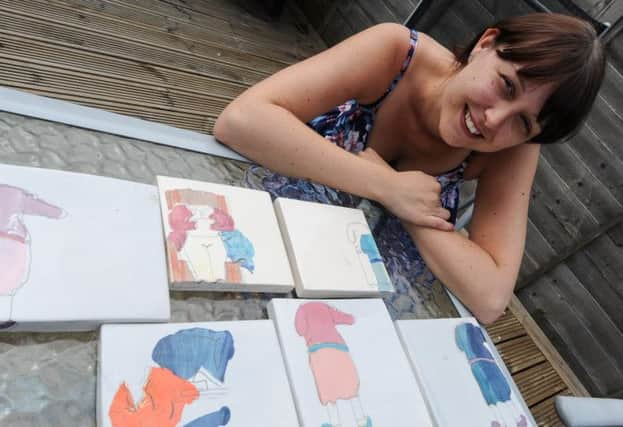Artwork to help you remember the person


It can be hard for both the suffers of dementia and their families to cope with the condition, which often causes people to lose their memories and have trouble communicating.
This week is Dementia Awareness Week, and until Saturday, the Alzheimer’s Society is trying to raise awareness and understanding of the illness.
Advertisement
Hide AdAdvertisement
Hide AdOne artist with experience of caring for people suffering from dementia has decided to encapsulate the illness through her work.
Penny Wood, 27, has worked at Brooklands care home, in Bakewell, since she was 19 years old and is only too familiar with the disease.
A decorative arts student at Nottingham Trent University, she has created tiles inspired by her work, which she plans to display in a hospital to raise awareness of the disease.
Penny, of Youlgrave, said: “I want my work to be attractive but it is important to me for it to have meaning.”
Advertisement
Hide AdAdvertisement
Hide AdHer tiles are decorated with illustrations she has done of people living at the home. Each image is placed on the tiles so the heads of the residents are not showing.
“The reason for that was because dementia affects the mind and takes away memory but also because I didn’t want these images to identify individuals,” said Penny.
The tiles are to be arranged in three stages on the wall of a hospital – representing the three stages of dementia.
“The first stage is when people are diagnosed with dementia but at that point their memory loss isn’t too severe,” said Penny. For that stage, Penny has created tiles of a larger 17cm by 17cm size which are arranged in uniform rows.
Advertisement
Hide AdAdvertisement
Hide AdAbove are smaller 15cm by 15cm tiles which are arranged in an irregular pattern.
“They show stage two, which is when things start becoming more confused and the memory loss gets worse,” explained Penny.
For the third and final stage the tiles are just 5cm by 5cm, showing significant memory loss. The images on the tiles overlap with certain parts “missing” and the tiles are scattered.
The background on which the tiles are to be mounted on to will be grey, this is to show the density colour of brain matter when shown on a computerised tomography (CT) scan. Colour is also important throughout Penny’s work. She has used splashes of vibrant oranges and reds in the residents’ clothing.
Advertisement
Hide AdAdvertisement
Hide Ad“It is to make people stop and take notice and it also acts like that flash or spark of memory people with dementia can get,” she said. “A lot of consideration has to go into what colours you use for artwork intended for hospitals. You have to think of things like people’s religions. For example, red and white flowers can mean death in some religions so you won’t see them on artwork in hospitals.”
Penny is starting full time work as an activities co-ordinator at Brooklands following her graduation this summer and also wants to pursue a MA degree in art therapy.
Penny’s work will be on display during the university’s annual degree show festival being held from May 30 to June 7.
The Alzheimer’s Society calls for people to ‘remember the person’ when it comes to dementia.
lFor further information and advice on the condition, visit the society’s website www.alzheimers.org.uk/remembertheperson. People can also call them on 0300 222 1122.